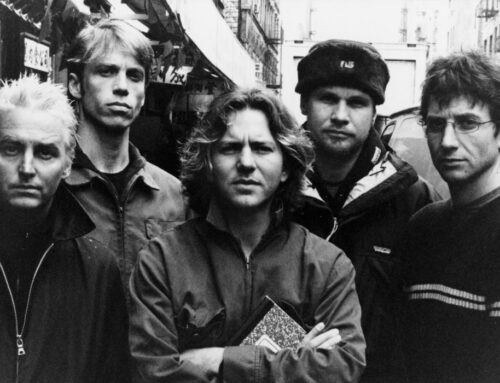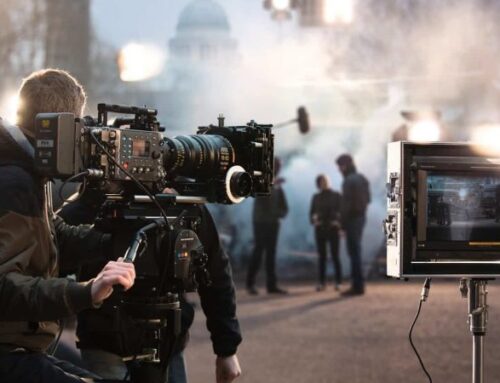Recently, on December 12, 2023, the Copyright Royalty Judges announced a cost-of-living adjustment (COLA) increase in the mechanical royalty rates for the 17 U.S.C. §115 statutory license for making and distributing phonorecords of nondramatic musical works regarding physical phonorecords and Permanent Downloads. The new rate is 12.40 cents per reproduction or 2.39 cents per minute of playing time or fraction thereof, whichever amount is larger. The new rate will go into effect on January 1, 2024.[1]
One of the most frequent questions I get from my copyright law classes is why we still refer to this rate as a “mechanical” royalty when someone reproduces a musical composition for use as a cover recording. The answer is simple in one way, but has a rather complicated back story:
In 1896, Edwin S. Votey invented the first practical pneumatic piano player, called the Pianola, which kicked off the business of manufacturing and selling the self-playing “player  piano” as well as the “piano rolls” that made the apparatus function. The mechanical device featured a pneumatic (later electro-mechanical) mechanism that operated the action of the piano hammers striking the strings.
piano” as well as the “piano rolls” that made the apparatus function. The mechanical device featured a pneumatic (later electro-mechanical) mechanism that operated the action of the piano hammers striking the strings.
The apparatus used perforated paper, or metallic “rolls,” into which holes were punched in order to program the keys that played the musical composition. By 1903, the Aeolian Company had more than 9,000 piano roll titles in their catalog and was adding approximately 200 titles per month, including many of the musical compositions owned by the Tin Pan Alley publishing companies whose stock and trade up to that point was “sheet music” featuring musical compositions written by John Philip Sousa, Irving Berlin, Victor Herbert, and George Gershwin, among many others. Consumption of music at that time involved a consumer who purchased this sheet music and gathered around her parlor piano with friends to sing along as she played.
As with any new technology, progress creates the need for the law to evolve. Slowly, the consumers’ parlor pianos, requiring a human component, were replaced by these newfangled Pianola devices churning through the music without mistake. The problem, of course, is that Tin Pan Alley’s publishers, and therefore the composers, were not being compensated for the “reproduction” of their music by these mechanical maestros, as when a consumer purchased sheet music to play along with. So, the songwriters of Tin Pan Alley began an aggressive campaign to fight for the survival of their livelihood.
To kick off this campaign in 1906, John Philip Sousa wrote a magazine article entitled The Menace of Mechanical Music[2] warning society of this dastardly mechanical music that is “sweeping across the country with the speed of a transient fashion in slang or Panama hats, political war cries or popular novels” and was becoming a “substitute for human skill, intelligence, and soul.” He described the device as “mathematical system[s] of megaphones, wheels, cogs, disks, cylinders, and all manner of revolving things.” Sousa, and others like him, was concerned that mechanical music would cause “social decline” as people stopped making music together. Much to the dismay of Tin Pan Alley, the “automatic music” was already usurping the role of sheet music.
In the article, Sousa argued strongly against the prevailing view at the time that a player piano roll was not a “copy” of the sheet music in the traditional sense, and more specifically was not addressed by the archaic 1790 Copyright Act. He supported his argument with an appeal to Article I, Section 8, Clause 8 of the Constitution:[3]
[M]y claim is, that the words “exclusive” and “writings,” particularly the latter, are so broad in their meaning that they cover every point raised by existing copyright laws, even to the unauthorized use of musical compositions by mechanical-reproducing apparatuses, and all this because these two words deal, not alone with the letter, but with the spirit as well.
 The position that Sousa and the rest of the Tin Pan Alley industry took is that the copy of their musical compositions produced by the player piano roll was clearly a violation of their copyrights, not to mention their rights under the Constitution. Using this argument, they initiated legal action that ultimately resulted in the Supreme Court of the United States case, White-Smith Music Publishing Co. v. Apollo Co. (209 U.S. 1) in 1908. The Supreme Court ruled against Tin Pan Alley, holding that the piano rolls were not copies of the plaintiff’s music, but instead a mechanical component of the machine that created music, and thus player piano and piano roll makers did not have to pay royalties to the sheet music composers. This was the first of many blows that songwriters and the songwriting community would have to endure over the years.
The position that Sousa and the rest of the Tin Pan Alley industry took is that the copy of their musical compositions produced by the player piano roll was clearly a violation of their copyrights, not to mention their rights under the Constitution. Using this argument, they initiated legal action that ultimately resulted in the Supreme Court of the United States case, White-Smith Music Publishing Co. v. Apollo Co. (209 U.S. 1) in 1908. The Supreme Court ruled against Tin Pan Alley, holding that the piano rolls were not copies of the plaintiff’s music, but instead a mechanical component of the machine that created music, and thus player piano and piano roll makers did not have to pay royalties to the sheet music composers. This was the first of many blows that songwriters and the songwriting community would have to endure over the years.
In response to this failure of the court system to recognize the basis of the Progress Clause, songwriters lobbied Congress. Following the ruling, Sousa, Herbert, and other Tin Pan Alley composers urged Congress to pass, and threw their support behind, a desperately-needed “new copyright bill” that was being circulated in a congressional committee, a bill that would ultimately lead to the passage of the 1909 Copyright Act. The 1909 Act was intended to address many of the new technologies that had been invented since 1790 – the player piano, the sound recording and gramophone, terrestrial radio – and bring copyright law into the 20th century. It included, among other things, a provision that required payment of a royalty to songwriters and publishers when a third party made a reproduction of their musical composition in a mechanical format. This royalty ultimately garnered the name of a “mechanical royalty” because of the connection to the mechanical player piano and it’s been referred to as such ever since.
The mechanical royalty rate established by the 1909 Act was 2 cents for each reproduction of a musical composition made and provided that, once published under the authority of its owner, a third party could reproduce the musical composition under a “compulsory” license and pay the “statutory” rate of 2 cents. The mechanical royalty rate remained 2 cents for seven decades until the passage of the 1976 Copyright Act, which increased it to a whopping 2.75 cents. Few songwriters retired from that stellar increase. The rate increased ever so gradually over the following decades, until it reached the point of 9.1 cents a few decades prior to the passage of the Music Modernization Act of 2018 (the “MMA”).
In the latter part of the 20th century, technology once again created the necessity for improving the structure of reproduction music, this time in the form of digital copies and streaming versions of the musical compositions. The MMA addressed this issue by implementing new processes for digital streaming services to pay for the compulsory mechanical license through a new non-profit organization created by law, known as the Mechanical Licensing Collective (MLC). Part of the MMA requires the Tribunal to review the statutory rate periodically to determine new rates.
The mechanical royalty rates established for streaming services are unlike the statutory rate structure enacted for physical recordings, permanent digital downloads, and ringtones. Specifically, the mechanical royalty payments for CDs and downloads are based on a per unit calculation and is distributed by the licensee; while, streaming mechanical payment royalty rates are based on a percentage revenue formula that varies based on the licensee’s business model related to the offering of the musical recordings and paid out by the Music Licensing Collective. This means that the amount due by the service or digital music platform to each publisher is usually a proportional percentage of the revenue earned by that entity.
Additionally, there is a minimum payable rate according to the type of service provided by the streaming entity, including whether music subscription fees are charged by the licensee and/or whether the service is free to use or is ad supported. The mechanical royalty rate payable for on-demand streaming, such as Pandora, is currently 15.1% of revenue. It is set to increase to 15.2% in 2024 and then increase by half a percentage point in each of the remaining three years of this period, peaking at 15.35% in 2027.
Meanwhile, for the stand-alone portable subscription offerings such as Spotify, the total content cost (“TCC”) component of the rate formula will be set at 26.2% of what’s paid to labels for the entire term, or $1.10 per subscriber, whichever is lower. This TCC is then compared to the licensee’s total service revenue — whichever is larger is designated the “all-in” pool, including both performance and mechanical royalties. Performance royalties are then subtracted from this all-in pool, leaving just the mechanical royalties. Finally, the resultant mechanicals are compared against a different stream of income calculated by multiplying the streaming service’s total subscribers by 60 cents per person. Whichever of these two totals is larger becomes the final mechanical royalty pool paid out to publishers and songwriters.
For questions about royalties of any kind, give us a call anytime at 615.338.5130.
[1] See, Federal Register, Vol. 88, No. 237.
[2]Sousa’s article was originally published in Appleton’s Magazine, Vol. 8 (1906), pp. 278–84. See, John Philip Sousa and “The Menace of Mechanical Music,” Journal of the Society for American Music 3, no. 4 (November 2009): 431–63.
[3] This clause, sometimes referred to as either the “Progress Clause” or, less accurate, the “Copyright Clause,” states: Congress shall have . . . [the] power to secure for limited time to authors and inventors the exclusive right to their respective writings and discoveries.






